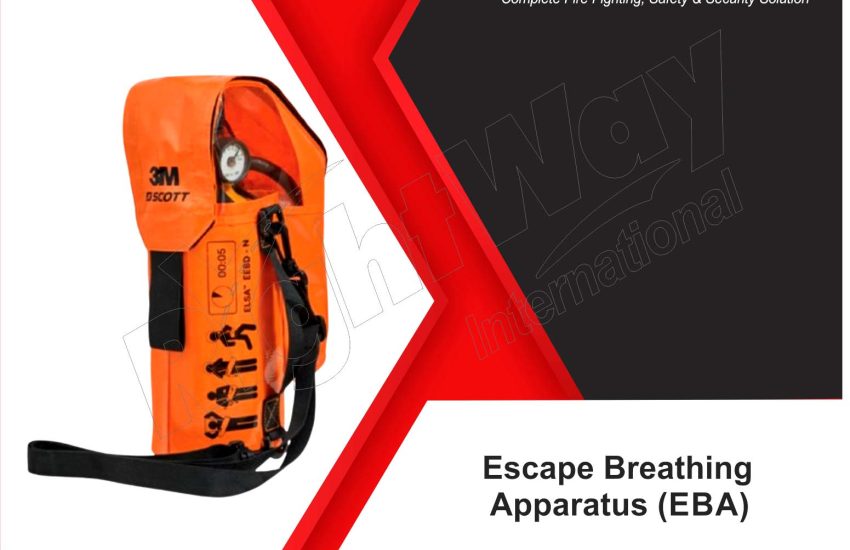Escape Breathing Apparatus (EBA) is a crucial safety device designed to provide breathable air in emergency situations. EBAs are essential for individuals who may encounter hazardous environments, such as in firefighting, industrial workplaces, or confined spaces. Understanding the features, applications, and maintenance of EBAs is vital for ensuring safety and preparedness during emergencies.
What is Escape Breathing Apparatus (EBA)?
Escape Breathing Apparatus (EBA) is a type of respiratory protection designed to allow individuals to escape from environments filled with toxic gases, smoke, or other hazardous materials. Key components include:
- Air Supply: Typically consists of a compressed air cylinder that provides a limited supply of breathable air.
- Facepiece: Covers the mouth and nose, creating a secure seal to prevent contamination.
- Harness: Secures the apparatus to the user for comfort and mobility during escape.
Applications of Escape Breathing Apparatus
EBAs are used in various settings, including:
- Firefighting: Enables firefighters to escape from smoke-filled environments safely.
- Industrial Workplaces: Essential in factories or plants where chemical leaks may occur.
- Confined Spaces: Used in situations where air quality may rapidly deteriorate.
- Rescue Operations: Provides a safe air supply for rescue personnel during emergencies.
Key Features of EBA
When selecting an Escape Breathing Apparatus, consider the following features:
- Air Supply Duration: EBAs are designed for short-term use, typically providing air for 10 to 30 minutes.
- Comfort and Fit: A secure and comfortable fit is crucial for effective use during emergencies.
- Visibility: Clear facepieces enhance visibility, especially in low-light or smoky conditions.
- Weight: Lightweight designs improve mobility and ease of use during escape.
Choosing the Right Escape Breathing Apparatus
Selecting the appropriate EBA depends on specific needs and conditions. Consider these factors:
- Type of Hazard: Assess the potential risks in the environment, such as smoke, chemicals, or low oxygen levels.
- Duration of Escape: Choose an EBA that provides sufficient air supply for the expected escape time.
- User Training: Ensure that personnel are trained in the proper use and maintenance of the EBA.
Maintenance and Care of EBA
Proper maintenance is essential for ensuring the reliability and effectiveness of Escape Breathing Apparatus. Follow these guidelines:
- Regular Inspections: Conduct routine checks for damage, leaks, and proper functioning before each use.
- Cleaning: Clean the facepiece and harness regularly to prevent contamination.
- Air Quality Testing: Ensure the compressed air supply meets safety standards.
- Annual Servicing: Schedule professional inspections and maintenance annually to ensure compliance with safety regulations.
Conclusion
Escape Breathing Apparatus (EBA) is a vital safety tool for protecting individuals in hazardous environments. By understanding its features, applications, and maintenance requirements, organizations can enhance safety and preparedness. Investing in high-quality EBAs and providing proper training is essential for ensuring effective use during emergencies.


